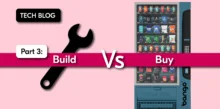HTML5 apps – Thriving without an app store
by Sukey Miller

Chantal Tode, writing for Mobile Marketer, has written a really interesting piece entitled “How to market HTML5 apps without the benefit of an app store”.
She touches on many of the issues that Bango’s payment customers wrestle with. The biggest difficulty faced by HTML5 apps is the absence of a focused distribution channel. Native apps by contrast have an excellent distribution platform that’s sitting on the phone’s home screen: the app store. Furthermore, a native app can be downloaded and will then leave an icon on the device, where an HTML5 app would require the user to set up a shortcut to the web to have the same ease of access. This isn’t complex, but neither is it intuitive. Of course mobile web app stores exist, and there is considerable OEM, developer and operator interest in Mozilla’s Firefox Marketplace, for example.
As the Mobile Marketer article astutely points out, HTML5 apps probably lend themselves much more effectively to QR code campaigns – Where an app, even a specific item of content, can be opened straight from a QR enabled ad, rather than being directed to a listing in an app store, then opening the app at a generic start screen.
One vital element of this discussion, which didn’t make it into the Mobile Marketer piece, concerns payment flexibility. Today’s giant app stores exert a degree of control over their app ecosystems, particularly around payment mechanisms. Often, the only available payment mechanisms are based around credit/debit cards, which limits sales largely into developed world markets, and even in these markets restricts the number of payments made. Depending on the store there may be additional limitations on pricing and offer models that are supported.
By publishing an HTML5 app on the mobile web, developers can experiment with a wide variety of charging models. The mobile web gives very broad access to operator billing, which drives a significant upside on content sales. By allowing a simple, one-click charge to bill payment option, conversion rates increase significantly, and developers can sell to the huge swathes of the world which are without credit cards.
Ultimately this isn’t such a binary decision. Mozilla are soon to launch FireFox Marketplace, a new app store, alongside a series of smartphones to run the new FireFox OS. This new ecosystem is built for HTML5 open web content, and will be free from the content lock-in and proprietary payment restrictions found elsewhere in the mobile sphere. Following the loose model which Mozilla employed with their FireFox browser, the vision is to deliver technology into the mobile space that keeps it open, that drives user choice, and steers around proprietary lock-ins. With an eye on widening access to mobile payment, FireFox Marketplace will lead with operator billing for purchases.
This then may be the future. An app ecosystem based on web technologies, and accessible across the breadth and depth of the mobile web, as well as being discoverable through a conventional app store on the phone. However the ‘native app versus HTML5’ dynamic plays out, we’re certain that any effective mobile monetization strategy will need to tap into operator billing – hitching a ride on the mass market of phone and phone bill.
![]()
Subscribe to our newsletter
Get the latest subscription bundling news and insights delivered straight to your inbox.



